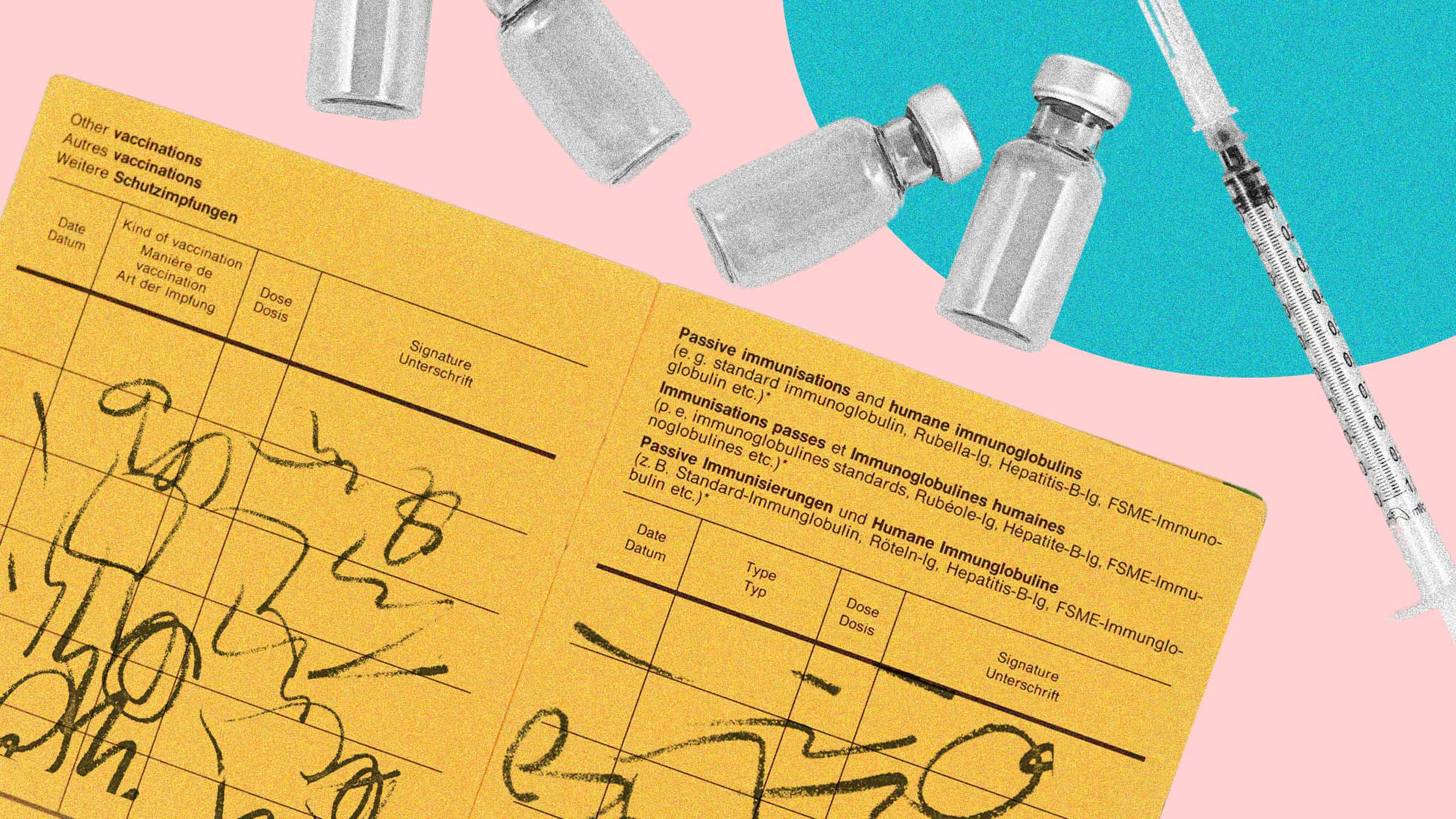We can all agree no one wants a sexual encounter that results in painful, itchy warts on their genitals. Nor does anyone want to contract an STBBI (sexually transmitted or blood-borne infection) that might give them cancer years down the road.
Unfortunately, contracting the most common STBBI in North America—the human papillomavirus (HPV)—could result in either, depending on the strain. When doctors say HPV is “common,” they mean common. When unvaccinated, around 80-90 percent of sexually active people will have an HPV infection in their lifetime. While some forms of HPV can cause the uncomfortable growth commonly referred to as genital warts, other strains may greatly increase your risk of cancer, especially (but not limited to) cervical cancer, which can take years to develop, and is caused almost exclusively by a prior HPV infection.
The good news is there’s a simple way to prevent both infectious bumps on your junk and cancer: a vaccine. As its name suggests, the most commonly administered version of the shot, Gardasil 9, protects against nine strains of HPV infection, including two that commonly cause warts, and seven that are associated with cancer. It’s widely available through public schools and sexual health clinics across Canada for persons of all genders, for free. The vaccine works best when given before people become sexually active, so it’s most often delivered through school programs, which most commonly target kids in Grades 4 through 6.
The bad news is that if you don’t get the vaccine through a school program or before a government-mandated cut-off age—usually 26, although it varies from province to province—the vaccine is not only less effective, but it has to be paid for out of pocket. Given that a full vaccination series of three doses will set you back around $600 in Canada and $750 in the U.S., it’s a pricey little jab and one that some people, especially working-class and low-income people without insurance might not be able to afford.
It’s true that the vaccine is less effective at preventing cancer when delivered to older populations—remember, 80-90 percent of sexually active adults will contract HPV at some point in their lives, so the likelihood that you’ve already had an infection gets higher the older you are. Still, getting the vaccine prevents future infections (including genital warts). While not all HPV infections lead to cancer, you’re rolling the dice each time you’re infected, so even if you didn’t get vaccinated as a youth, getting vaccinated as an adult improves your odds of remaining healthy into the future.
HPV belongs to a family of viruses called papillomaviridae, a group of small, non-enveloped DNA viruses that tend to infect mucosal tissues—the wet places of their host’s bodies, such as the mouth, vagina and anus. Papillomaviruses are incredibly varied, and species-specific strains are thought to infect most species of mammals, along with some birds, reptiles and fish. Anyone who has ever raised a puppy, for example, may have been alarmed to find small, node-like lesions in the mouth of their fluffy friend—these are canine oral papillomas, a largely harmless but highly communicable infection caused by a dog-specific papillomavirus.
Even HPV—the papillomavirus specific to humans—isn’t just one virus, but a cohort of closely related variants; nearly 200 strains of HPV have been identified, but not all of them cause cancer, warts or even apparently illness. Strains HPV6 and HPV11 are the most common culprits for genital warts, the outward symptom most people associate with infection, accounting for about 90 percent of this type of symptomatic infection. But they’re not the strains you need to worry most about: to date, about 14 strains—of which HPV6 and HPV11 are not included—have been found to be factors in later development of various forms of cancer development, such as cervical, facial, anal and throat cancers.
The important thing to remember about all types of HPV is anyone of any gender can be infected. Many people may be asymptomatic while they’re infected, and although the immune system usually clears the virus from the body, this can take up to two years—during which time, you’re highly contagious, whether you show outward signs of disease or not. Perhaps most important, regardless of whether or not the virus ever caused symptoms—or if you even knew you had it all—some strains of HPV can still lead to cancer years down the line.
While HPV can be a factor in several different types of cancer, it’s unique in that it is entirely responsible for one specific form of cancer, says Michelle Halligan, director of prevention with the Canadian Partnership Against Cancer, an arm’s-length, federally funded non-profit dedicated to cancer prevention and control. Previous HPV infections account for 100 percent of cases of cervical cancer, which is cancer of the cervix, the canal-like bottom end of the uterus that connects it to the vagina. HPV infections have an average five-year survival rate after diagnosis of 67 percent.
HPV’s link to cervical cancer obviously means the people it impacts the most are people with cervixes—cis women, along with AFAB non-binary folk and trans men who haven’t had a total hysterectomy. Still, any sexually active person of any gender can contract or spread HPV. In other words, it doesn’t matter who you’re knocking boots with or how you like to get your boots knocked, HPV is extremely common and extremely communicable.
Even if you or your partners aren’t at risk for cervical cancer, HPV is linked to a number of oral cancers, in particular, an increasing number of throat and neck cancers in cis men. An increasing number of HPV-related cancers—four out of ten—are being detected in cis men. Additionally, people of any gender who are HIV-positive are more likely to contract HPV and develop related health issues. HIV-positive gay and bisexual men are at a particular risk for HPV contraction and later development of HPV-caused anal cancer.
In summary, there’s a highly infectious sexually transmitted virus you can get and give without even knowing it, that might give you or someone you care about freaking cancer years or even decades after you slept together, regardless of gender or sexual orientation, and there’s a vaccine you can get that makes that not happen?
Sounds like you should just … get the goddamn vaccine, right?
Naturally, it’s never that simple.
For one thing the financial barrier can be a large one. Someone living in Ontario or California and earning the $15.50 legal minimum wage, for example, would have to work 39 and 48 hours, respectively—more than a quarter of their monthly income on standard 40-hour work week—in order to make enough money to pay for a full course of the vaccine.
There are also unique barriers to accessing the vaccine for folks with disabilities, especially in the U.S., where people may not be insured, or insurance and healthcare providers have the final say in whether or not a person is eligible to receive the vaccine. Cal Montgomery, 55, is a trans man and disability rights activist who lives in Chicago. Montgomery is physically disabled, sometimes non-speaking and has autism, factors that he—along with numerous studies—says puts him in a high-risk group for sexual assault and abuse. Montgomery has asked to be vaccinated for HPV, but says their provider won’t administer it to anyone over the age of 44.
There’s also a lot of stigma and misinformation within the healthcare system around the “need” for people with disabilities to get vaccinated for a sexually transmitted disease like HPV, along with other reproductive healthcare, such as PAP smears, Montgomery adds.
Because the vaccine is often given to—and is most effective in—people under the age of 18, the issue of parental consent versus the wishes of the child—an issue many trans youths are already very familiar with—also comes into play, says Halligan. Although the vaccine is “strongly recommended,” it’s not mandatory, and therefore some parents may choose not to have children and teens vaccinated against HPV—even if the young person in question would prefer to have access to the vaccine. This can lead to delays in vaccination, which may further compound conflicting advice from doctors, who may not fully understand the needs of their patients when it comes to the vaccine.
This is precisely what LJ Thuringer, 30, says happened to them. The Canadian, who is now living in the U.K., explains that they wanted to be vaccinated for HPV in their youth, but their parents wouldn’t let them. Moreover, when they tried to get it later in life, they were discouraged by their healthcare provider.
“My parents didn’t vaccinate me in school when it was offered, for religious reasons,” they say. “When I approached my doctor to get it as an adult, I was around the age of 27 or 28, and my doctor’s advice on what to do was confusing. They indicated that I didn’t need to get it since I was so old already. I wasn’t sure where to find accurate information.”
Halligan would like to see access to information, care and vaccines improved across the board.
“Definitely, there are equity issues at play … and one of them is access to this HPV vaccine, whether it’s financial access, accessibility near where you live or catch-up clinics versus school-based clinics,” they say.
“A key focus in … eliminating cervical cancer is closing those gaps.”


 Why you can trust Xtra
Why you can trust Xtra


